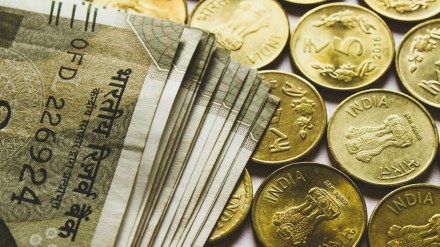With the robust pace of capital expenditure by the infrastructure ministries, and the interest-free capex loans to the state governments,
The Centre will have spend 60% of the Rs 10 trillion capex budget for the current fiscal by September, Finance Secretary TV Somanathan told FE. This will be enabled by the robust pace of spending being maintained by the key infrastructure ministries and agencies, and the front-loading of the release of capex loans to the state governments, he said.
Commenting on the recent surge in inflation, which made the Reserve Bank of India’s forecast of average inflation of 6.2% in the current quarter look like an underestimate, the secretary said food inflation is expected to cool by September, as fresh harvest will increase supplies.
The official said the fiscal deficit will be reined in at the targeted level of 5.9% of the Gross Domestic Product (GDP) in FY24, as “revenues at aggregate level” are progressing as per the plan.
“There is a seasonal spike in prices. For those items which are perishable, their price spike was steep. But, the supply response to that was also very fast. It is not like wheat and rice (the harvests of which) which come only twice a year. The harvest cycle is very fast in items like tomatoes and onions and these are harvested multiple times in a year,” Somanathan said.
The Centre has raised the capex target by 36% on-year to Rs 10 trillion (including Rs 1.3 trillion capex loans to states) for FY24 from Rs 7.36 trillion (including Rs 81,200 crore to states) actual spending in FY23, in sync with the public investment-led economic recovery plan.
The government’s expenditure, especially capex, has been robust with the achievement of about 28% of the annual target in Q1FY24 compared with 23.4% in the year-ago quarter.
“Capex by most of the big ministries including railway and roads will definitely be above 50% of their annual targets by September….could be around 60%,” Somanathan said.
Railways has completed 44% of its annual capex of Rs 2.6 trillion (including Rs 2.4 trillion budget support) in the first four-and-half months of the current financial year.
Somanathan said that even if there is additional pressure on prices due to the upcoming festival season, an increased supply in the next two months of many of the seasonal items will cool prices.
Retail inflation surged to 7.4% in July from 4.9% in the previous month, breaching the Reserve Bank of India’s target range for the first time since February 2023. The sharp increase in vegetable prices and elevated inflation in other food categories such as cereals, pulses, spices, and milk have driven this increase.
Recently, the government through cooperatives sold tomatoes at Rs 70/kg, nearly half the rate at which the vegetable was being sold in the market.
The government has also taken several measures to improve the supply of essentials. To curb hoarding and speculation amid rising prices, the government in May had imposed limits on the stocks of tur and urad dal. The stock limit is applicable to a range of entities such as wholesalers to retailers, millers and importers. The order will be effective till October 31.
The increase in capex could be attributed to the Centre’s directive to all ministries to accelerate capital expenditure in H1FY24 to avoid disruptions later as half a dozen states going to assembly elections by 2023-end. To facilitate this, it has also exempted the ministries from various cash control norms.
Besides removal restrictions on capex, the Centre’s faster release of interest-free capex loans to states to accelerate development spending is also aiding overall capex.
So far in FY24, the Centre has released around Rs 40,000 crore loans to states, such releases could reach around Rs 65,000 crore or half of the Rs 1.3 trillion facility by September, Somanathan said. Even though the Centre had a Rs 1 trillion capex loan scheme in FY23, the disbursements actually began post-September 2022.
